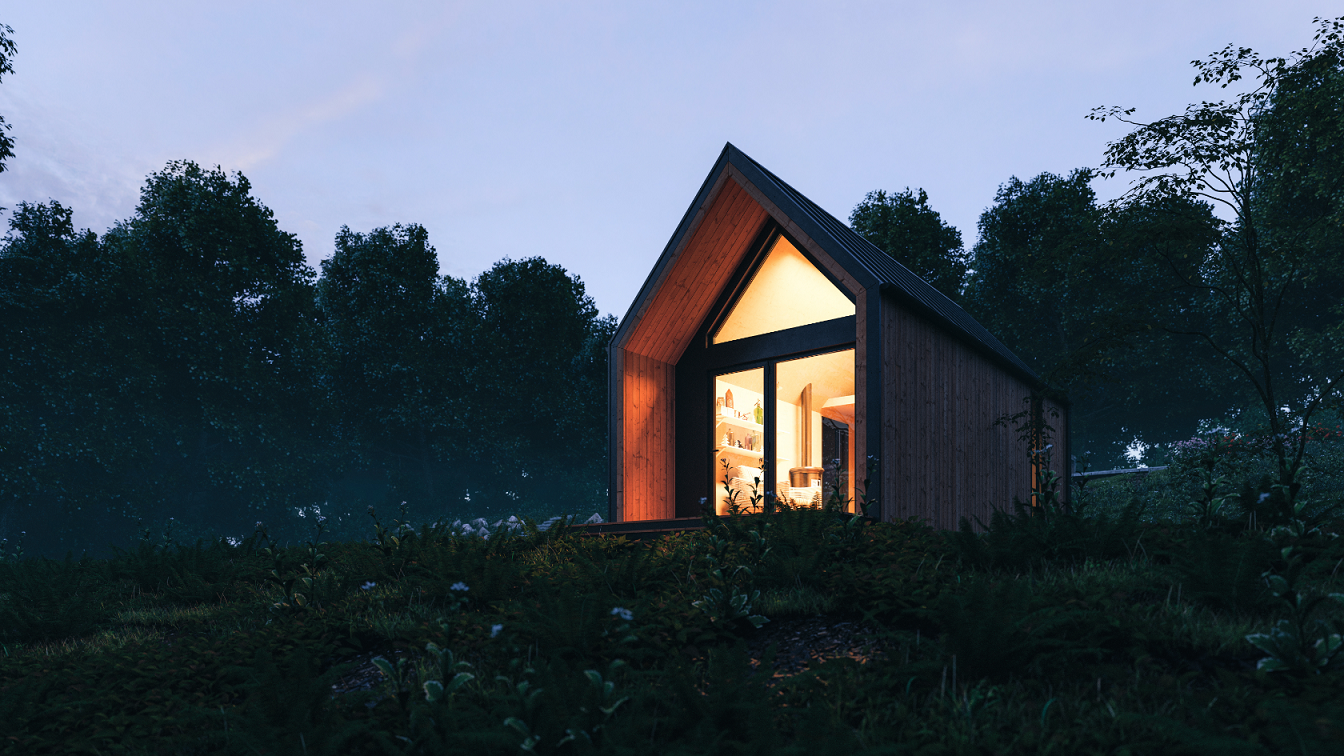
In the realm of dream homes, safety and comfort take the lead, don’t they? But what if that home was compact, minimalist, and…tiny? A hot trend in the housing market today is the tiny house movement, drawing many with its emphasis on simpler living. But you might be wondering, “Are tiny houses sturdy and safe?” So let’s explore this topic and put your worries to rest.
What’s the Tiny House Appeal?
Let’s first address why these miniature homes are causing such a stir. Tiny houses are about more than just size. They’re about adopting a simpler lifestyle, reducing environmental footprint, and often, financial freedom. The tiny house movement champions living within your means, in a space that’s ‘just enough.’ But the big question remains, can such small structures stand firm and provide a safe living space?
Safety in Construction: The Role of International Building Codes
Tiny doesn’t mean fragile. Like their larger counterparts, tiny houses can be designed and built to withstand daily life and environmental pressures. One of the primary keys to a sturdy tiny house lies in its construction, particularly adherence to the International Building Codes (IBC).
The IBC is a comprehensive set of guidelines that ensure structural safety. They cover aspects like foundation, wall construction, roofing, and more. By following these guidelines, a tiny house can achieve a level of safety and durability comparable to traditional homes. It’s all about quality over quantity!
Tiny Homes: A Safe Harbor in Any Weather?
Now, let’s talk about weather. The thought of a tiny house squaring off against a fierce storm might seem unnerving, but fear not. When built appropriately, tiny houses can indeed hold their own against severe weather.
The size of a home doesn’t solely dictate its ability to withstand weather events. Much depends on the quality of the build and the preparations in place. Just like traditional homes, tiny homes can face challenges from heavy rain, floods, tornadoes, hurricanes, and even snowstorms. But with well-planned construction, quality materials, and good preparation, a tiny home can stand sturdy.
Boosting Your Tiny House Safety: Handy Tips and Tricks
There’s no place like home, especially when it’s safe, warm, and cozy. When it comes to tiny houses, the same rules apply. Now, while we’ve already established that tiny houses can be just as sturdy and secure as traditional homes, there are still a few extra steps you can take to further enhance your tiny house’s safety. Let’s explore these, shall we?
Choose Your Location Wisely
Location, location, location! Just as with traditional houses, the geographical placement of your tiny home can significantly impact its safety. Areas prone to extreme weather events, such as hurricanes and tornadoes (like parts of Florida and Texas in the US), present a higher risk. So, if possible, set up your tiny house in a safe zone, away from these hazardous areas.
Anchor Down Your Tiny House
Living tiny doesn’t mean living lightly – at least, not when it comes to withstanding strong winds! This tip is particularly crucial for tiny houses on wheels: anchoring your house properly can prevent it from rolling or shifting due to high winds. Remember, local building codes vary, so ensure you’re using the right method of anchoring for your location.
Fortify Windows and Safeguard Your Roof
Your tiny house’s windows and roof are like its shield and helmet, protecting you from the elements. Reinforcing windows can stop them from shattering during violent storms, while securing your roof will prevent it from flying off in gales. Don’t forget to carry out routine checks for leaks and cracks – these can lead to water damage over time if left unattended.
Insulation is Your Friend
If Jack Frost is a regular visitor in your region, proper insulation becomes a key player in your tiny house’s safety. Good insulation keeps your home snug during snowstorms, and directing pipes through interior walls can prevent them from freezing over in harsh winters.
Guard Your Electrical Connections
Stormy weather can wreak havoc on exposed electrical power lines. By keeping nearby branches trimmed and running lines underground when possible, you can sidestep power troubles during storms.
Keep Up with Regular Maintenance
Maintaining your tiny home is like keeping your vehicle in good running condition. Regularly trim overhanging trees, secure any loose outdoor items before storms arrive, and check your roof for potential leaks or damage. It’s amazing how these small but consistent efforts can contribute significantly to your home’s overall safety.
Plan for the Worst, Hope for the Best
Last but not least, always have a contingency plan. This means stocking up on essential items such as non-perishable food, first-aid kits, batteries, and even a battery-powered radio. An evacuation plan is another crucial part of your safety protocol, should a significant storm or other disaster hit.
When it comes to your tiny home, being proactive about safety is key. By following these tips, you can ensure that your cozy little abode is as sturdy and secure as can be. After all, there’s no place like a safe and secure home!
Fire Safety in Tiny Homes
Fire safety is another essential factor to consider. Tiny homes, due to their limited space, require careful planning to ensure fire safety. This includes installing smoke detectors, having a fire extinguisher within easy reach, and ensuring safe installation and use of appliances, especially heating units.
Building materials can be selected for their fire resistance. Tiny homes have the advantage of being a manageable size for upgrades, so a small investment in fire safety can go a long way.
Going Tiny: Safety in Mobility
One fantastic perk of tiny homes that sets them apart from traditional houses is their potential for mobility. Imagine having the liberty to change your scenery whenever you please, all while taking the comfort of your home along for the ride! It’s an enchanting prospect that many tiny house owners relish. However, this unique advantage also ushers in a new set of safety considerations around the structural integrity of the home during transit and its secure anchoring upon reaching your chosen destination.
But don’t worry, we’re here to tell you that the wandering lifestyle of mobile tiny homes does not, in any way, undermine their safety. In fact, if properly constructed and maintained, these petite homes on wheels can be just as secure and sturdy as their stationary counterparts. The secret lies in meticulous planning during the construction phase – focusing on appropriate weight distribution, adequate structural reinforcement, and secure tie-downs. So, as long as your tiny home is designed to endure the demands of the open road, you’re good to go!
The Green Advantage: Sustainable and Safe
We all know that tiny homes have a significantly smaller environmental footprint than traditional homes. But one might wonder if this eco-friendly route compromises safety. Well, we’re thrilled to debunk this myth – it doesn’t! Actually, many sustainable materials and technologies enhance the safety and sturdiness of tiny homes.
Take, for instance, the inclusion of renewable energy systems, like solar panels and wind turbines, can provide reliable off-grid power and enhance your safety profile. These sustainable power sources eliminate potential hazards associated with outdated electrical systems often found in older, traditional homes.
So, in the tiny house world, it’s a win-win situation – you can embrace sustainability without sacrificing safety. Now, that’s what we call smart living!
What About Insurance?
When it comes to maintaining your home’s safety, whether tiny or grand, one often overlooked but indispensable factor is insurance. Think of it as a safety net; it’s always comforting to know it’s there, ready to catch you in the event of unexpected damage or loss.
When it comes to tiny homes, insurance isn’t a ‘one-size-fits-all’ scenario. Their charm and characteristics might, at first, seem to make insurance a tricky affair. After all, they don’t exactly fit the mold of conventional homes that insurance policies traditionally cover. But before you start fretting about this, we have some good news for you!
As the tiny house movement expands, gaining popularity and acceptance worldwide, the insurance industry isn’t staying behind. More and more insurance companies are now recognizing the distinctive needs of tiny house dwellers, and are stepping up to create policies tailored to fit those needs.
These insurance policies take into account the unique aspects of tiny homes, such as mobility (if your tiny home is on wheels) and the types of materials used. So, acquiring insurance for your tiny home, while a bit of a novel territory, is absolutely doable and increasingly straightforward. This extra layer of protection is a wise choice, adding an additional peace of mind to your cozy, compact living.
Are Tiny Homes Safe for Families?
Tiny houses might seem like a perfect fit for singles or couples, but what about families with children? Well, it might surprise you to learn that with the right design, tiny homes can indeed be a safe, comfortable, and fun place for children.
When designing a tiny house for a family, there are certain things to take into consideration, like creating secure sleeping spaces and storage solutions, choosing durable materials for areas of high use, and ensuring that there’s enough space for everyone to live comfortably.
But most importantly, the same safety considerations apply to tiny homes as they do to any other home when it comes to children. Things like child-proofing windows and doors, ensuring that all electrical outlets are safe, and installing gates at the top and bottom of any stairs are all part and parcel of making a home child-friendly, regardless of size.
Conclusion
There’s a lot to love about tiny houses. Their charm, the freedom they offer, and the promise of a simpler life are alluring. And yes, they can also be as sturdy and safe as traditional homes when built correctly, following building codes and other safety guidelines.
To sum it up, a tiny house can be a dream home that is both safe and secure for you and your loved ones. Whether you’re single, have a partner, or have children, a tiny home, when constructed with safety and durability in mind, can provide a warm, sturdy shelter for years to come.
So, if you’ve been on the fence about going tiny due to safety concerns, we hope this blog has alleviated some of your worries. Remember, a home’s safety is less about its size and more about the care taken in its design and construction. Tiny houses, built well, are a testament to this fact. So why not consider joining the tiny house movement and experience the joy of living large in a small, safe, and sturdy space?
